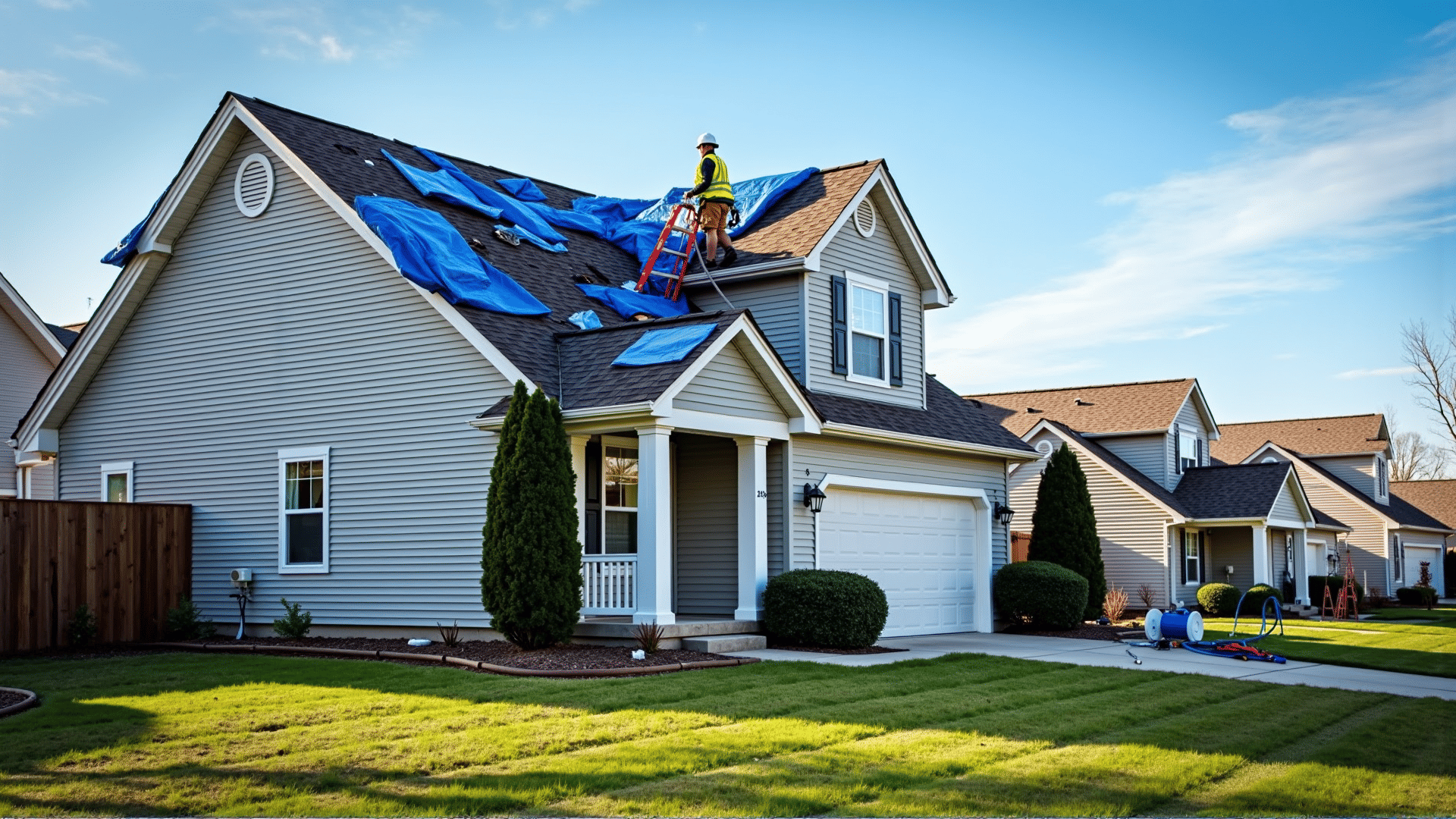When it comes to homeownership, maintaining the condition of your roof is one of the most critical responsibilities. Your roof not only protects your home from the elements but also ensures the safety and comfort of those inside. However, unexpected events such as storms, heavy winds, or fallen branches can lead to emergency situations that require immediate attention. Here’s a comprehensive guide on what you need to know to handle emergency roof repairs efficiently and protect your home and investment.
Recognizing the Signs
The first step in handling an emergency roof repair is to recognize when there’s an issue. Common signs that your roof might need immediate attention include:
- Leaking Water: If you notice water dripping from your ceiling or interior walls, this could indicate a serious roof leak.
- Missing or Damaged Shingles: After a storm, inspect your roof for missing or visibly damaged shingles.
- Dents or Breaks: Hailstorms can cause dents, while falling branches may puncture or break roof materials.
- Sagging: A noticeable dip or sag in your roof structure could signal structural damage.
Taking Immediate Action
Upon recognizing a roofing issue, it’s essential to act quickly:
-
Ensure Safety: Before investigating further, ensure that the affected area is safe to approach. Avoid areas where the ceiling appears ready to collapse, and keep away from electrical hazards resulting from water infiltration.
-
Mitigate Water Damage: If water is leaking into your home, collect it using buckets or containers. To avoid further interior damage, cover your furniture and belongings with plastic sheets or tarps.
-
Temporary Repairs: If safe to do so, you can apply temporary measures to stop the water intrusion. This could include using roofing tar or a waterproof tarp to cover the damaged area temporarily.
Calling the Professionals
Once immediate danger and damage control have been addressed, it’s time to contact a professional roofing contractor. Here’s what to consider when choosing the right professional:
- Experience and Expertise: Choose a contractor with extensive experience in emergency repairs specifically. They should have the skills to address urgent roof problems efficiently.
- Licensed and Insured: Verify that the contractor is licensed to operate in your area and carries adequate insurance to protect against potential liabilities.
- Prompt Response: In emergency situations, a swift response is crucial. Look for contractors who offer 24/7 emergency services.
Preventative Measures
While not all emergencies can be prevented, regular maintenance can reduce the risk significantly:
-
Routine Inspections: Conduct bi-annual inspections, especially after major weather events. This allows for early detection of potential issues that could lead to emergencies later on.
-
Tree Maintenance: Trim branches that hang over your roof, as they can cause damage during high winds or storms.
-
Gutter Cleaning: Ensure gutters are free of debris to prevent water buildup, which can lead to leaks and structural damage.
Understanding Insurance and Costs
Emergency repairs can be costly. Understanding your insurance policy can help alleviate some of that financial burden:
-
Check Coverage: Review your homeowner’s insurance policy to understand what types of roof damage are covered and what your deductible amounts are.
-
Document Damage: Take photographs and document details of the damage. This helps in filing a claim with your insurance provider.
Conclusion
Dealing with emergency roof repairs can be daunting, but being prepared and knowing how to respond can make the process much smoother. By paying attention to warning signs, taking swift and appropriate actions, choosing the right professionals, and investing in preventive maintenance, you can protect your home and extend your roof’s lifespan. Remember, when it comes to your home’s roof, proactive care and immediate response to problems are not just wise investments—they are essential.
